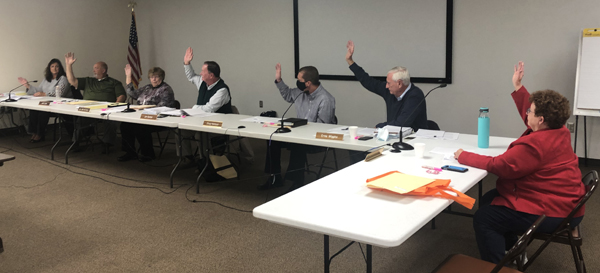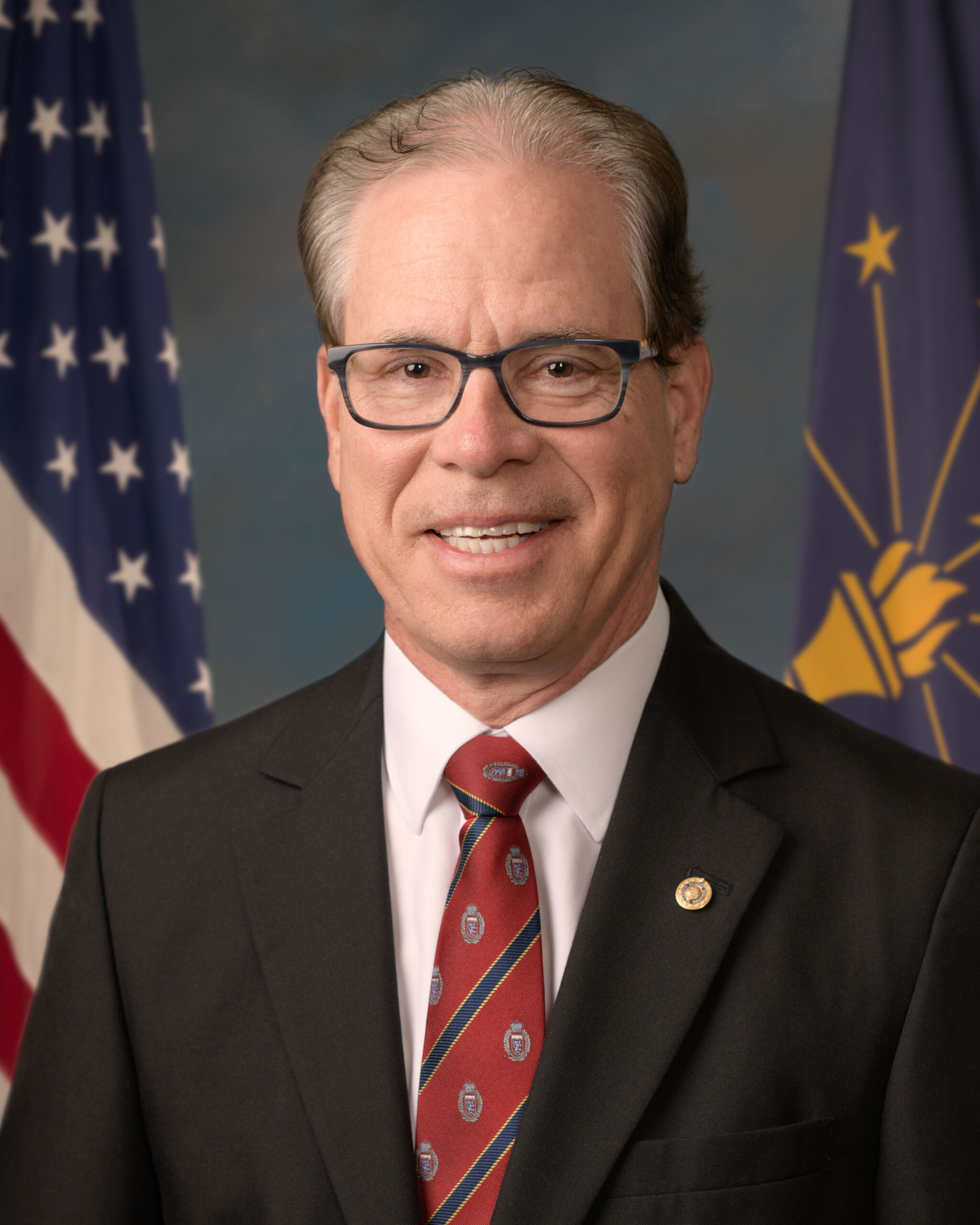
Facing a $7 million revenue deficit for its 2021 budget, the Kosciusko County Council Thursday approved a list of recommendations that will reduce that figure by about $3.5 million.
The remaining deficit will likely have to be covered by the county’s operating cash balance, eating into the county’s cash reserves, unless more cost savings or an increase in revenue can be generated.
The proposed 2021 general budget is about $27 million, and the council must adopt it at its Thursday, Oct. 8 meeting.
During their special meeting Thursday, council members floated ideas like a countywide hiring freeze and raising the local income tax, but no action was taken on those suggestions.
Council President Jon Garber started the meeting by reminding the council that at their last meeting he asked a special committee be formed to come up with some suggestions. That committee included Sue Ann Mitchell, Joni Truex, Ernie Wiggins and County Auditor Michelle Puckett.
Mitchell then went through the list of recommendations that the committee came up with when it met Sept. 16. All the recommendations presented were unanimously approved by the council.
The first was to move $3 million from the Economic Development Income Tax fund for 2021, an increase of $1 million from what was moved in 2020. “That would give us another $1 million in the general fund” for 2021, she said.
Committee members spoke to County Assessor Susan Engelberth about moving one employee’s salary to the assessor’s sales disclosure budget and one to the reassessment fund budget for a year to remove stress from the general fund. Engelberth agreed. Half of one employee’s wage in the county surveyor’s general fund budget will be moved to the surveyor’s corner perpetuation fund.
Mitchell said they looked at the county’s rainy day fund and initially thought it was the other answer to the revenue shortfall, but decided not to do anything with it at this time. It could not be appropriated anyway until 2021 because it was not in the original budget process.
“But that lets us get time to see what kind of funds we actually have to see if we actually are going to have a terrible shortfall, or if the cash flow is going to happen to where we don’t have to touch that money,” Mitchell said.
She said it’s actually the commissioners’ call on how that money gets spent and the rainy day fund is set aside for a “rainy day,” but right now the county isn’t having a rainy day. “2021 will be much easier than 2022 and 2023, based on projected incomes,” she said.
The committee discussed the local option income tax. “We determined that we’ve been at 1% for a long time, and we determined that now is probably not the time to do a knee-jerk reaction to increase that at this time. We need to look at it in another year and another year and continue to monitor that and see how our general fund is doing in relationship to what money we can collect,” Mitchell said.
Another impact on the general fund budget is the state requirement that the motor vehicle highway fund be split 50/50 into restricted and unrestricted funding. Mitchell said they’ve received some encouraging words that there may be some adjustment to that 50/50 split, but it probably won’t totally go away, “which would help get us over the hump of having to take general money in order to fund MVH.”
After that committee meeting, Mitchell said the county received from the Department of Local Government Finance a revised estimate of what the County Option Income Tax and EDIT money will be. Those funds came in “much higher,” but aren’t a certified amount, though likely more accurate. She said it would be under a $1 million increase in COIT and about a $700,000 increase in EDIT, which will give the county “a fair amount” of additional funding.
Finally, on Wednesday, Mitchell said, memos were received from the State Board of Accounts and the Office of Management and Budget saying that now some of the CARES Act money could be used to pay for public safety and public health officials who had worked March 1 to about Sept. 30. If that money is available, Mitchell said it could be “the last piece of the puzzle” to make 2021 happen “without us all jumping off a cliff.”
Wiggins said he asked Puckett for some information on the $27 million budget. Personal services makes up $19.5 million of that budget, or 73%, he said, and the county already has decided it’s giving its employees a 1% raise in 2021. Other services – contractual services – is about $6 million, and that’s about 22% of the budget. Wiggins said that means there’s not a lot left in the budget that the council can start going through and “whacking.”
While he appreciated the revenues are coming in a little bit higher, he did review a financial report from Baker Tilly. “I agree with Michelle. 2021 is not going to be our issue, it’s 2022 because those income taxes and EDIT taxes are going to be way down,” Wiggins said.
Those taxes are going to be down because of the COVID-19 pandemic this year, which led to businesses shutting down and people losing jobs.
Puckett said they’ve done more research and spent more time on this year’s budget planning than in years past.
“So, where we left things at the last time that we met to where our budget was at about $27 million, and our revenues to support that budget we were at $20 million. So we have a $7 million deficit in funding that budget. With that being said, that left about $3 million cash balance in our reserve fund. We’re definitely spending down the dollars we have, but we did still have a $3 million operating balance. That is without any assistance from EDIT because that wasn’t considered at this time, so that’s an option you guys have to make,” Puckett said.
Councilman Mike Long asked what 2022 might look like. Puckett said the county will probably lose another $3 million. “Once we utilize those dollars and they’re spent, it’s really difficult to recoup. We are definitely not running a balanced budget currently. Our expenditures are exceeding our receipts,” she said, despite all the cuts that have been made by the departments.
Long said if the county is going to have a hiring freeze, then it truly needs to have a hiring freeze. On the two years he’s served on the council, he said when a department asks for an employee, they’re given that worker.
Councilman Doug Heinisch said they need to go beyond hiring and look at eliminating and/or consolidating positions.
Long later said he knows they don’t want to raise the local option income tax, but the county can’t maintain levels today with income from 20 years ago. “It doesn’t work,” he said, so maybe the county is at a point where it doesn’t have a choice but to raise that tax.
On the possibility of the county reducing staff, Wiggins said, “We don’t pay into the unemployment fund. We pay the salary. So you’re not going to get dollar-for-dollar reduction there.”
In 2015, the county’s operating balance was 71% of its budget, “which is almost never heard of,” Wiggins said. In 2021, the county will still be at 37% and at worse at 24% of its operating balance in 2022.
While he said he wasn’t advocating raising the tax rate, the Baker Tilly report says Kosciusko County has the lowest tax rate “of all of our surrounding counties.”
Truex eventually made the motion to approve the committee’s recommendations, which was seconded by Wiggins and unanimously approved. The Oct. 8 meeting to adopt the budget is at 6 p.m. in the multi-purpose room of the Justice Building.




